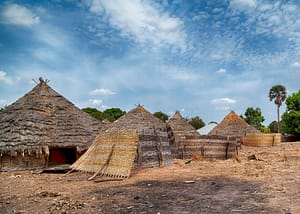Community conservation supported by global report on the sustainable use of wildlife
by Gail Thomson
The Intergovernmental Science-Policy Platform on Biodiversity and Ecosystem Services (IPBES) recently released a summary of an Assessment Report aimed at global policy makers that examines the current state of sustainable use of biodiversity. The full report, which is to be released soon, took 85 experts and indigenous knowledge holders working with 200 contributing authors four years to complete. The recommendations to policy makers, based on over 6,200 sources, provide strong support for community conservation.
The report focused on four major uses of wild species – fishing, gathering non-timber plant products, logging, terrestrial animal harvesting, and non-extractive uses (e.g. wildlife watching, cultural practices). It noted the importance of sustainable use for the livelihoods, food security and cultural or spiritual well-being of indigenous people and local communities (IPLCs). The report further noted the dangers of unsustainable uses that lead to biodiversity loss and degradation of life-supporting ecosystems, and points to the need for all wildlife use to become sustainable to reverse these trends.
“People in vulnerable situations are often most reliant on wild species and are most likely to benefit from more sustainable forms of use of wild species to secure their livelihoods.”
This balanced approach to meeting the needs of humanity generally and IPLCs in particular, while halting or even reversing biodiversity loss, is closely aligned with the concept of community-based natural resource management (CBNRM) as practised in Southern Africa. The authors recognise the dependence of vulnerable rural communities on the direct use and trade of their natural resources to survive and drive their socio-economic development. The latter is especially true in developing countries where health, education and other infrastructure are desperately needed in remote areas. In the last few decades of CBNRM in Southern Africa, during which time Resource Africa Southern Africa has worked with local communities in the region, community-based organisations have used the revenues gained primarily from the use of terrestrial animal species to build clinics, improve school facilities, provide scholarships for young people, and provide clean water supplies and electricity to remote villages.
“Fishing, terrestrial animal harvesting, logging, and nature-based tourism are vital to regional and local employment and economies in many developing and developed countries and further contribute to public infrastructure, development and provisioning of related goods and services.”
As noted throughout the report, IPLCs weave traditional uses of plants and animals with modern markets related to wildlife watching, recreational hunting and fishing, and plant uses to boost their revenues from sustainable use. Community-based organisations (CBOs) in Southern Africa have achieved this over the last few decades primarily through tapping into the high-value animal-based markets of tourism and hunting. Community forests and fisheries reserves have been established in some of these countries, thus recognising the importance of community-led management of these resources. Harvesting high-value plants for the medicinal or cosmetic industries, and linking fishing communities with recreational catch-and-release fishing are among potential growth points for CBNRM.
“Policy instruments and tools are most successful when tailored to the social and ecological contexts of the use of wild species and support fairness, rights and equity.”
Developing supportive policies that speak to local situations and establishing effective local-level governance structures are key issues according to the IPBES report. While the Southern African Development Council (SADC) and the African Commission on Human and People’s Rights are supportive of CBNRM, some national-level policies provide greater scope for CBNRM development than others. One of the reasons why the Community Leaders Network of Southern Africa was established is to share lessons learned from different countries and promote best practices and policies that will improve CBNRM across the region.
“Effective monitoring of social, including economic, and ecological outcomes supports better decision-making. Scientific evidence is often limited, and indigenous and local knowledge is underutilized and undervalued.”
Governance systems that provide for inclusive decision-making, equitable benefit distribution and gender equality are well known as key ingredients for success, and improving these are a core focus of civil society organisations that support CBNRM. For our part, Resource Africa Southern Africa is working on a regional monitoring and information system that will improve community decision-making through supporting systematic data collection on key CBNRM indicators. We also support the development of Biocultural Community Protocols, whereby communities are able to articulate their relationship with natural resources in a legal manner that can speak to governments in a bottom-up approach to policy development.
“Ensuring sustainability of the use of wild species, including inter alia by promoting the sustainable use and halting overexploitation, is critical to reverse the global trend in biodiversity decline.”
It is heartening to see so many of the pillars of CBNRM articulated as global best practice in the IPBES summary for policy makers. While we look forward to delving into the full report, we hope that policy makers around the world have taken note of this summary document and its implications. We can halt global biodiversity loss by throwing our full support behind IPLCs to combine their traditional knowledge with current economic opportunities to create a future where both people and nature thrive.
All quotes from Summary for policymakers of the thematic assessment of the sustainable use of wild species of the Intergovernmental Science-Policy Platform on Biodiversity and Ecosystem Services:



